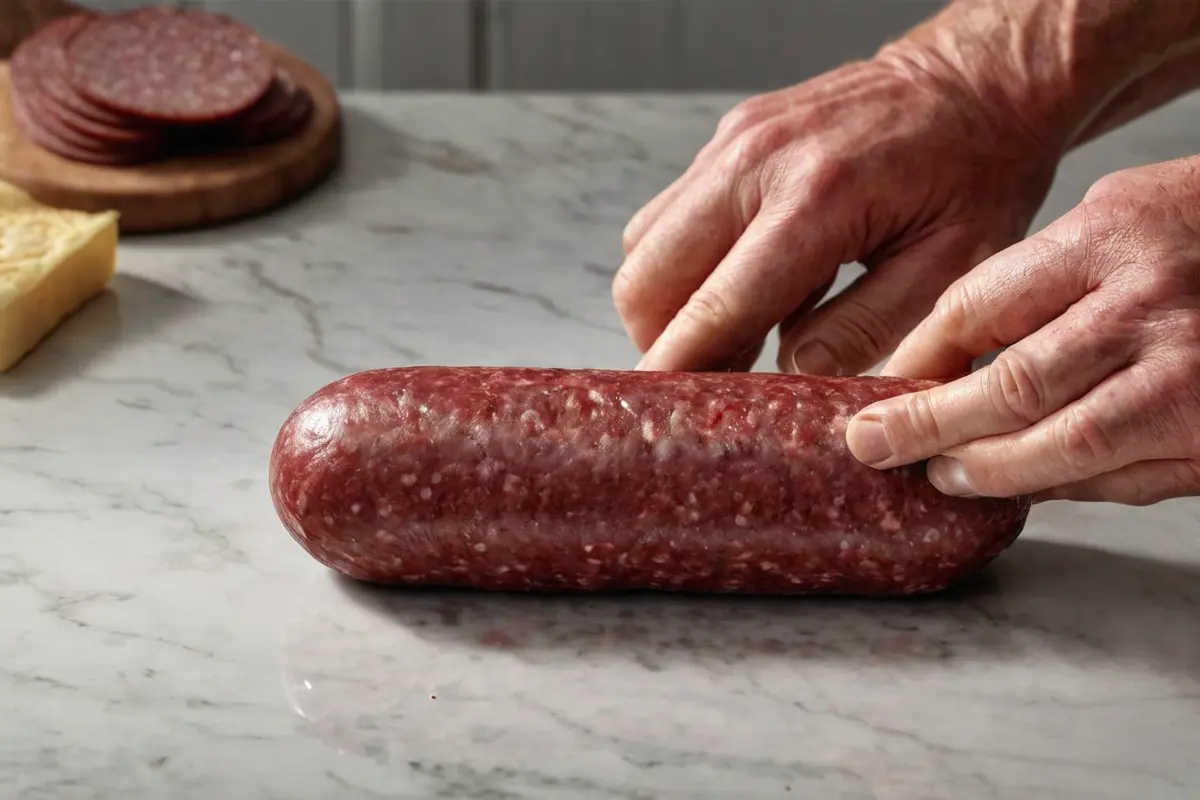Summer sausage, a staple in many culinary traditions, stands out not only for its rich flavors but also for its remarkable shelf stability. This popular type of cured meat, cherished for its robust taste and convenience, often prompts the question: “Can summer sausage go bad?” This is a legitimate problem for anyone wanting to enjoy this delicacy with care and to the fullest extent.
In this comprehensive guide, we will explore the essential aspects of summer sausage, including what it is, how it is made, and the best practices for storing and consuming it safely. We’ll dive into the processes that allow it to last so long, how to spot when it has gone bad, and the best ways to store it to extend its shelf life. Moreover, we’ll provide practical tips for incorporating summer sausage into your meals, ensuring that it remains a delicious and safe addition to your diet.
Understanding these details is crucial for anyone who enjoys this cured meat, as it helps ensure that every bite of sausage is as safe as it is delicious. By learning about the preservation techniques and spoilage signs, you can make informed decisions about purchasing, storing, and consuming summer sausage. This guide aims to equip you with all the knowledge needed to enjoy your summer sausage without worries, enhancing your eating experience with every slice.
What is Summer Sausage?
What Defines Summer Sausage?
Summer sausage, a beloved staple in many households, is known for its robust flavor and convenience. Typically made from a combination of pork and beef, it is seasoned with a blend of spices, which may include garlic, mustard seeds, and black pepper. This sausage is often enjoyed as part of a charcuterie board or as a hearty snack. For a deeper dive into how sausage is crafted, you might want to explore this complete guide to making and enjoying summer sausage.
Why is Summer Sausage a Favorite?
The appeal of summer sausage isn’t just in its taste; its preparation process also contributes to its popularity. Cured through smoking or fermentation, summer sausage boasts a long shelf life that makes it perfect for picnics, camping trips, and pantry storage. Because it does not require refrigeration until opened, it serves as an excellent food item for various occasions.
Moreover, summer sausage integrates seamlessly into many recipes. Whether sliced thin and served with cheese and crackers, or added into cooking for extra flavor, its versatility is undeniable. Now, you might wonder, with such an impressive shelf life, can summer sausage go bad? Well, while it’s designed to last, certain conditions can indeed shorten its lifespan. Let’s explore how you can maximize the longevity and quality of your sausage.
Preservation and Storage
How is Summer Sausage Made?
The process of making summer sausage ensures it can withstand time and travel. Firstly, the meat is ground and mixed with a cure, typically composed of salt and sodium nitrite. This mixture not only flavors the sausage but also works to prevent the growth of bacteria. Following the seasoning, the meat is tightly encased in either natural or synthetic casings and then subjected to a controlled smoking or fermentation process. These steps are critical as they imbue the sausage with its distinctive tangy flavor and contribute to its preservability.
Optimal Storage Conditions for Summer Sausage
Once made, how you store summer sausage can significantly impact its shelf life. Ideally, unopened sausage should be kept in a cool, dry place such as a pantry or cellar. Here, it can remain in good condition for up to six months. However, once opened, it’s vital to refrigerate the sausage to maintain its freshness. Wrapped tightly in plastic wrap or aluminum foil, an opened sausage can last in the refrigerator for three to four weeks. Furthermore, if you plan not to consume the summer sausage within this time frame, freezing is an option. Freezing can extend its life for up to two months without compromising its quality. Remember, though, once thawed, it should be consumed within two weeks and not refrozen.
| Storage Condition | Unopened | Opened | Freezing Option |
|---|---|---|---|
| Location | Cool, dry place (pantry/cellar) | Refrigerator | Freezer |
| Duration | Up to 6 months | 3-4 weeks | Up to 2 months |
| After Opening | Not applicable | Consume within 3-4 weeks, keep refrigerated | Thaw in refrigerator, consume within 2 weeks |
Maintaining the right storage conditions is key to preventing spoilage and ensuring that your sausage remains a safe and tasty addition to meals and snacks. So, while summer sausage is indeed robust, attention to storage is essential to prevent it from going bad prematurely. Thus, can summer sausage go bad? Yes, but with proper care, you can enjoy it at its best for longer.


